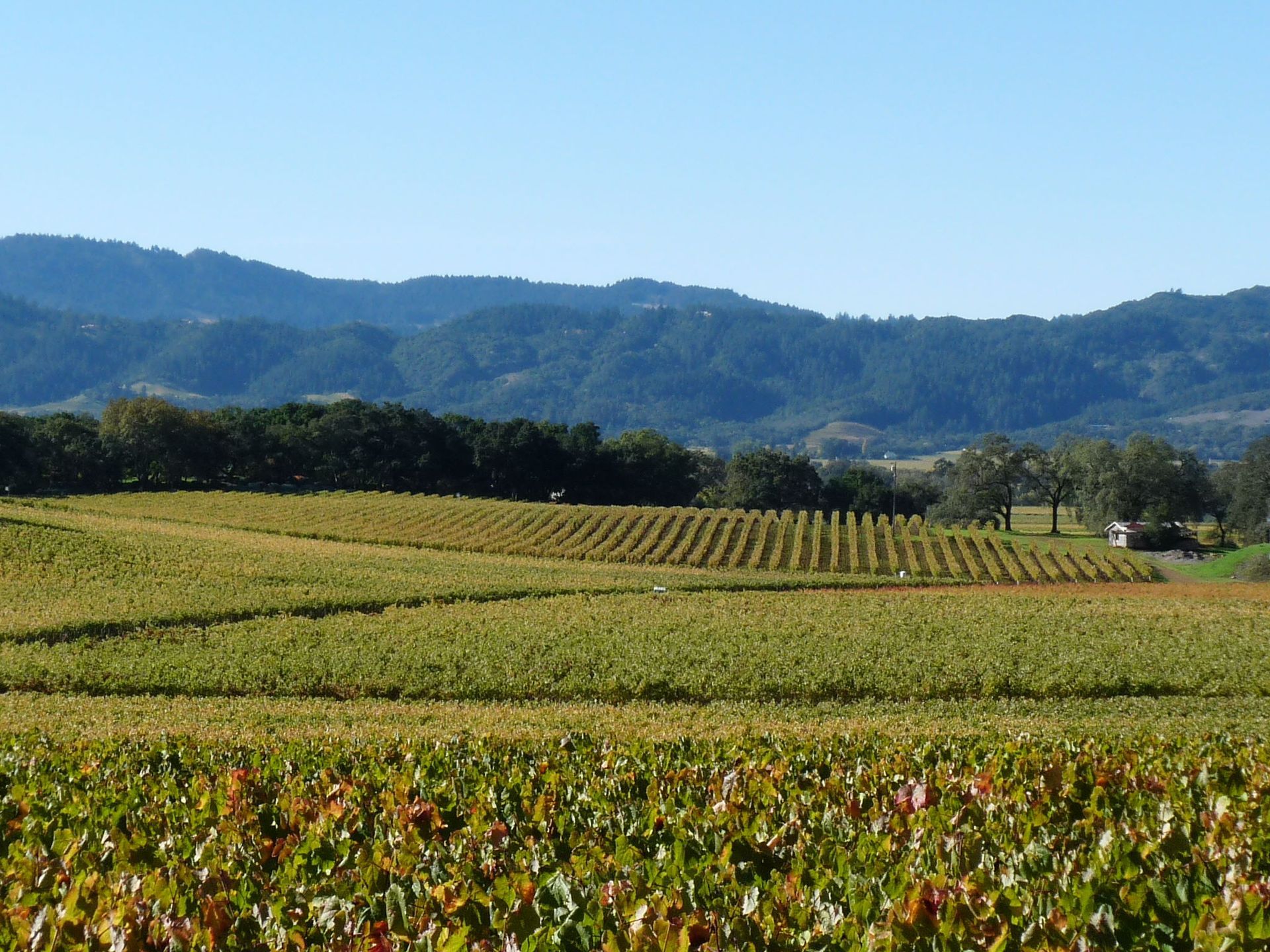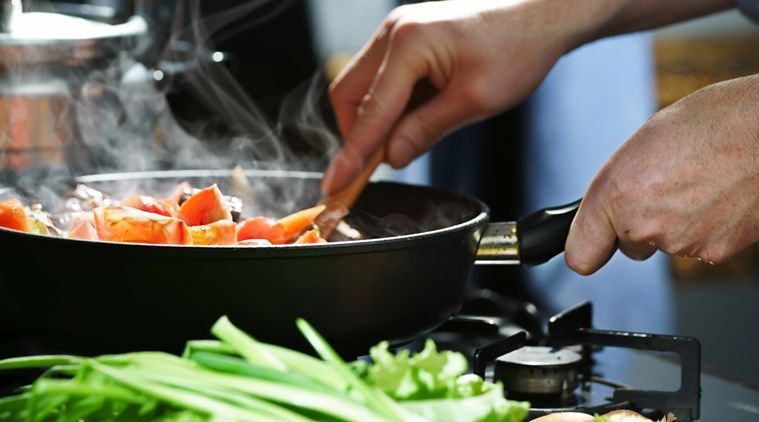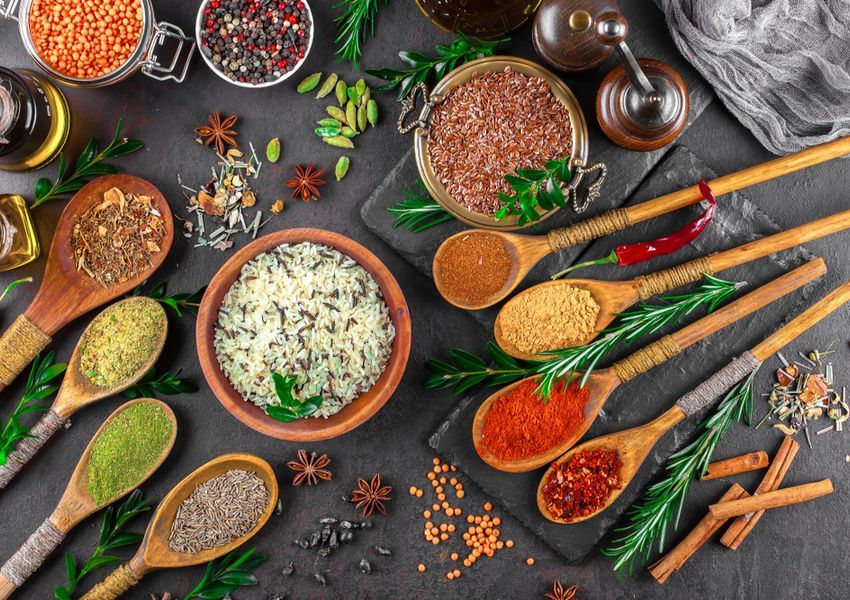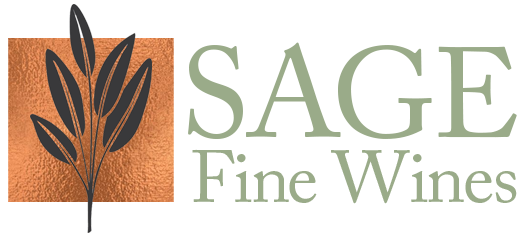Beyond Wine & Garden - A Somm's Tale

Napa and Sonoma are some of the most visited (and famous) regions in the world for wine tasting. Millions of visitors flood the valley every year with hope of that special trip of a lifetime. However, it has become increasingly expensive for both tasting and touring not to mention of the rising costs of hotels and dining during the visit. It is not uncommon for two persons to spend $1,000 - $2,000 for an entire days' activities. This can just be too rich for many budgets and the average wine lover. However, there are ways to hedge some of the expensive pitfalls for newcomers to wine country. As a private tour guide, I've been to over 950 of the region's 1000+ wineries and have comprised some ways to make the most of your trip and remain within a reasonable budget. Here are my top-10 insights to keep your expectations in-line while staying within a budget: 1) Plan early and get professional help planning. Probably one of the biggest and most critical mistakes people make is not planning far out enough in advance. This can lead to not having as many (good) choices and or having to settle for less than optimal accommodations for location or price. Additionally, much of what you need to plan for your days is often times directly relevant to where you are staying. A professional planner that knows the region can make this crucial element as your 'pivot point' for wine tastings, dining and other activities depending on what your preferences are for your time here. The first step with a planner is to decide whether you will be based in Napa or Sonoma and the options available from both areas. Yes, Napa and Sonoma are distinctly different regions and terrain. *See my planning services HERE. 2) Do your own research and understand the regions. It may be a bit old-fashioned, but take the time to actually look at a map. Napa and Sonoma are separated by the Mayacamas mountain range and although they look close they are quite a ways apart. Sonoma is over 100 miles long top-to-bottom and spreads east to the west almost 50 miles all the way to the ocean. Napa is fairly land-locked and only 35 miles long and only 5 miles wide. Understanding the difference between Napa down-valley and Napa up-valley can make a big difference in your plans as well. Conversely, knowing that Sonoma is five times bigger than Napa (and 30-40 mins apart) and much more spread out has a big impact on which wineries will be more available during your stay. I usually recommend one day in Sonoma and one day in Napa never trying to both in one day. 3) Decide well ahead of time your transportation needs. Although you will most likely have to rent a car to in and out of the area from any of the local airports, actually getting around wine country for tastings and such you will need some transportation assistance. The average DUI in California approaches $15k and there is just no reason to mess with this. If you have a designated driver, that is ideal and the least expensive method. However, just navigating around here can be tricky and it is nice to have someone that knows the optimal routes and knowledge of local traffic issues. There are a slew of driving services from ones that can drive your own car, to group tours and private tour companies. For reference, driver services usually start at $50/hr. and private full-service tour operators will run $80-$100/hr. with 6-hour minimums. *See my list of preferred private operators HERE . 4) Familiarize yourself with different types of tastings and costs associated. There is no getting around it here now...tastings have gotten very expensive. Additionally, almost all tastings in the valley have become "appointment only" with reservations required well ahead of time. That said, smaller areas like downtown Napa, Yountville, Calistoga, Sonoma and Healdsburg still have many options to walk around and do walk-up tastings on-the-fly. This actually provides some really good options for a quick tasting while casually strolling around on your own schedule. But most of the 'brand' name places that offer private tastings, food and wine pairings or winery tours are strictly appointment only. These will also range from $50 - $150+ per person depending on the experience. I do highly recommend doing a 'Chef's Pairing' somewhere along the way as it is one of my favorite experiences that you can rarely get at home. I'll try to write a separate piece on my favorite spots in the near future. 5) Choose your hotel or accommodations wisely. This is probably one of the most asked about items when people inquire about their trip to wine country. And yes, location still is (almost) everything. I always lead that hotels are so personal and individual depending on budget and what style of accommodations people prefer, that I recommend doing your own research and THEN I will assist on narrowing down the field. You have big resorts with tons of amenities, small B&Bs, VRBOs, boutique cottages and no-frills cheap(er) options with minimal amenities to choose from. But either way, be prepared for some major 'sticker shock' on accommodations here. Some of the most basic hotels run $300-$400+ per night and it is not uncommon for a medium-end property to run $600-$700+. Then of course, the high-end big name places here are often north of $900-$1,000 per night. Unfortunately, this has become a sticky evil here that does not seem to be subsiding anytime soon as hotels deal with lower occupancy rates. 6) Read a lot of restaurant reviews. Not that online reviews are the end-all, but it is a good place to start. Trip Advisor and Open Table will at least give you some real customers with (mostly) real objective reviews. There are SO many great choices here that it is hard to go too astray, but do your diligence online first. Make a couple of different reservations each night and then see what your feeling like once on the ground here. Get some personal recommends from other guests already here and then make your final choices. Likewise, see my personal restaurant recommends HERE and you will not be disappointed with any on my list. However, with all due respect to local help, do not rely on your hotel concierge after you get here as they are usually limited in their scope. And lastly, if you have a tour day scheduled, make your dinner reservations earlier than later. It seems counter-intuitive but you will find it is much easier to "keep the train rolling" versus coming back and napping to find yourself not being able to make it out for the big night. Eat early after a tasting day and get to bed early...trust me on this one. 7) Prepare well for your big tour day(s). If you have a long tasting/tour day scheduled, take some basic preliminary steps to assure you make the most of the day. When I was operating my private tours I would send my customers a top-10 list of how to best prep for their day. For purposes of summary, I will only list my top-5 most important items here. 1) Eat a good breakfast, even if you are not hungry. 2) Don't overdo it the night before. 3) Try not to drink in the morning before your tour day or in the tour vehicle. 4) Plan for a good lunch after the first 2 stops. 5) Do not feel like you have to finish all of your tastings. Use the spit/dump bucket early and often. And, of course, drink lots of water the minute you get off the plane and drink throughout the days as often as possible. 8) Plan other activities in-between tasting days if possible. My regular customers learned this after a few times coming out and trying to pack in 3-4 tasting days in a row. If you have three full days days here I will recommend one day tasting, one day activities (spa/chill/pool/biking etc.) and another day tasting a different region. Doing multiple tasting days back-to-back is much more difficult than it seems and it just wears you down. I realize a lot of people may not get back to wine country and they feel the need to "do it all" in a couple of days but it really is counterproductive and not as enjoyable. That does not mean you cannot explore wines on your 'day off', it just means do not plan formal tasting several days in a row. Give that middle day for you to just chill with the non-committed time to relax and enjoy it as it comes. 9) If limited in your total days traveling, skip San Francisco. As much as it pains me to say this, it has become a deep reality that San Francisco is not what it used to be. It is still a great city with tons to experience, but the amount of time, effort, cost and trouble just getting in and out of the city makes it really not worth the hassle. And, it takes major time (and costs) away from what you could be experiencing more relaxed in wine country. Also, if skipping SF, you will find it much easier (and cheaper) to fly in to Sacramento, Oakland or Santa Rosa without having to deal with the SFO nightmare that is. 10) Have a well-defined budget. I hate saving this for last and it very well could be or should be first. But is takes some reconnaissance and research to get your expectations in line first and then seeing what you can (or can't) afford. There is no getting around it, it is expensive to come to wine country. Arguably more expensive than going to Europe these days. When you add up travel, hotel, tastings, buying wine, transportation, dining and other activities, it can add up to well over $1,000 - $2,000 per day for two people. There are few shortcuts to take while here if you truly want to enjoy all that wine country has to offer. Do the research and decide on your financial threshold, but realize that this may or may not be the vacation on a light budget. by James Matuszewski (CSW) - james@sagefinewines.com James is freelance writer and certified Sommelier in Napa and works independently with various wineries, tour guides and restaurants within the Napa and Sonoma regions. He also represents small winery brands doing private tastings and ambassador activities throughout wine country.

First the good news, proper food and wine pairing is mostly a learned art. The bad news, it takes a long time to be able to do it seamlessly so that you can consider all the wine varieties at your disposal. That said, it does take a higher level of food and wine knowledge to understand nuances of ideal parings. Yes, you can drink whatever you want with any foods or dishes you wish...there are no "wrong" answers as Sommeliers like to recite. But the reality is there are some really poor choices you can make with certain types of foods marrying with improper wines. Let's dive in to some critical details of paring wine and food... 1. Understanding the 4 basic taste senses - salty, sweet, sour and bitter. 2. Get beyond the main protein and focus on the preparation or style of the dish. 3. The role acid plays in every dish and the wines. 4. Consider each the 'weight' of the food and the wine. 5. How to navigate around spices and regional or international foods. 6. Pairing multiple wines during the meal. 7. Three types of wine styles - sparkling, still, and fortified (dessert) 8. Aperitif and digestive wines. See my Perfect Pairings list.

As all my friends and family know all too well, my favorite chef is Bobby Flay . Not just because I enjoy his restaurants and food, but the way he is able to build bold flavors with whatever he is cooking. And like Bobby, I am not a dessert guy and rarely take on baking or other types of desserts...I leave that to the pros that do it well and I can just add it to my dinner without anyone getting hurt. As a Sommelier, I usually focus on wine and food pairings to achieve maximum flavor combinations. That said, I have my own ideas of what I refer to as the "Pillars of Flavor" to spice up or ramp up your daily dishes that you may (or may not) be aware of to augment you cooking style. Always keep in mind the 4 basic flavors are - Sweet, Salty, Sour, Bitter - with Umami (savory) being the 5th that is a balanced culmination of all. Here's is what I refer to as the ' Mighty Dozen ' pillars of flavor. Let's get started. 1. The correct ratio of salt (and pepper). This is always a tricky subject as levels of 'salt' or saltiness tastes are very individual. Most do not salt enough, especially with meat proteins. Not to mention the different types of salts to use (i.e. kosher, sea, Himalayan pink, grey, etc.) for certain dishes which is an entire separate issue. But salt is essential to achieve flavor and balance of the dish at some level. And, it varies with every dish depending if it used as part of a sauce/marinade, part of the entire dish such as soups and stews, or applied directly to proteins. The "correct" amount of salt has more to do with the proper amount of salt to use DURING the cooking process to elevate flavors vs. how much you should add at the end for your preference. Rather than say it is better to use less because you can always " add some later ", it is better to start light and taste often throughout the process until the proper level is reached. Salt just added at the end 'to taste' might take away from the overall flavor balance of the dish. I make a separate 4:1 mix of sea salt to pepper for my general seasoning and then apply individual salts depending on the dish. One of my favorites (i.e. easy button) that is a great blend of salt, pepper and garlic is Livia's Seasoning that you can order directly online. The bottom line with salt is to not be scared to use it generously and it takes a lot of practice to achieve the balance the dish deserves. 2. The French 'Trinity' (Mirepoix). Every culture and cuisine has its version of the French classic Mirepoix (onion, celery, carrot - pronounced mîr-pwä′ ) and loosely referred to as ' humble beginnings ' for all dishes and usually contains additional garlic and various herbs. Each of these bases are slightly different as well. Italian is Battuto, Spanish call it Sofrito (onion, garlic, tomatoes), Germany suppengrün (carrot, celeriac, leek), Cajun/Cuban/Puerto Rican sofrito (onion, celery, green/red bell pepper). Any way you slice it, it is literally the beginning of developing flavors in most all classic dishes. The key is the timing of adding in the ingredients - onion, celery, carrot - and then garlic for only 90 seconds max. Also, this is the best opportunity to deglaze with your alcohol of choice (wine, sherry, cognac, etc.) to scrape up the pan and its fond. As simple as this is, you rarely see this step highlighted in most recipes. 3. Acid and balance. The best way to picture acid and balance per-se, is to think of the most basics of oil & vinegar salad dressing. If it was just oil and herbs, it would be, well, cloying oily with the herbs and flavors being muted. The minute you add the right amount of vinegar to the oil (usually 2:1), it becomes a complete dressing. Other sauces and foods are very similar, but with the 'acids' coming in various forms such as citrus, vinegar, broths, alcohol (wine) and sometimes dairy or vegetables. Acid is crucial for creating the balance in your dishes, but can sometimes be a bit vague to some. A great real-life example was at Thanksgiving, I was helping my brother-in-law make the gravy. He had done a great job with the base (drippings, broth, rue) and had used a fair amount of herbs de Provence. Upon the first taste, it was 'thick-ish' and the flavors seemed stuck with nothing seemingly coming together harmoniously. After a short discussion I suggested we add a cup of chardonnay wine and voila, a nice balanced gravy that now had a 'pop' of flavor and the right viscosity. Every dish needs some sort of acid and it takes a lot practice and experimentation to know what type to acid to use for your dish. Most published recipes will call for an "acid" of sorts and now being more aware, you will notice it in forms of lemon or lime squeeze, cider vinegar, red wine vinegar, wine, sherry, cognac, or dairy (butter, milk, half n half). It is all very purposeful and just understanding how it affects the final flavors of the dish is the first steps to knowing what to add when you feel a dish needs that 'something' you can't quite put your finger to make the flavors shine through. 4. Deglazing and reductions. Although similar, the two are distinctly different, but equally key to flavor for sauces. Deglazing a pan involves adding liquid, such as stock or wine to a pan to loosen and dissolve food particles that are stuck to the bottom after cooking or searing. The leftover cooked food particles, known as fond, are the source of immense flavor but often overlooked. After deglazing , this becomes the main (base) source to create your sauces. A cooking reduction is just as it sounds, to reduce a liquid by means to simmer it until some of the water in it has evaporated, which intensifies the flavors, thickens the liquid, and causes it to take up less volume. The concentrated liquid you end up with is called a reduction. The main thing to understand is that the only thing 'reduced' is the amount of water while all the flavorings, seasonings, and all the solids stay in their original amounts. As does the salt, but more concentrated so you need to be careful when adding stocks with salt. 5. Protein cooking methods. This is a very broad subject and I'm going to only touch on a few common techniques without getting too technical. As it relates to building flavors, certain cooking methods react differently to seasonings and or how it absorbs the flavors surrounding it. We'll touch on pan searing, grilling, baking/roasting, broiling, and poaching. Pan searing is probably the most popular and it builds key flavors as it not only truly sears (added) flavors in to the meat, but it also helps retain the more of the natural juices of the protein. Grilling imparts that smokiness and char flavors, but when adding spices or herbs you need to be aware that certain ingredients can actually burn and cause and unwelcomed burnt taste element. Keep it simple with grilling proteins and stick to good doses of salt, pepper and garlic adding other essential herbs while resting the meat. While baking and roasting proteins takes extra time and attention, you can build flavors in numerous ways with the entire pantry at your disposal. Add broths in the pan to retain moisture, inject spices and herbs directly in to the meat for deep flavors, bake covered/uncovered to attain certain baked flavors, or add various toppings toward the end to get good finishing flavors...all options open on the table. Broiling is one of my personal favorites but often find most people are unaware of the optimum techniques for proper broiling . What I like best about broiling is that you can build flavors literally from the top down creating a nice crust full of flavors. Poaching meats is also an underused and underrated method that creates very delicate flavors with the use of various poaching liquids to cook with moist heat. 6. Cooking (and resting) times. This is such a simple and useful step, I'm amazed at how many people miss or do not plan for this critical part of building flavors. Think of it as a way to take all your efforts of seasoning and letting your protein baste itself in all those flavors within its own juices, naturally. Regardless of what cooking method you choose, it is almost always a good idea to let your protein rest for a few minutes (5-10) barring the big roasted turkey that can sit for 30 minutes or so. The only critical thing to keep in mind is that when resting your protein, it continues to cook. So plan appropriately on your final desired cooking temperatures. Additionally, when making sauces, soups or stews, it helps to have the dish sit without heat so the flavors can steep fully in to the dish. That's why many of these types of dishes taste better as "leftovers" because the flavors have been able to 'gel' harmoniously. 7. Addition of alcohol. Often missed or left out of many online recipes, alcohol plays an important part of elevating flavors and is usually one of chefs best friends. It plays an important role in deglazing, acidifying, reducing and creating more depth of flavors. As the alcohol 'burns off', it leaves behind nuanced flavors of the wine/sherry/cognac along with providing a nice acid balance to dishes. If putting it in to stews, soups or ragùs of sorts, it can also help marinate or tenderize the proteins. As mentioned above, I almost always use it to deglaze my 'mirepoix' bases and scrape up the oh-so-yummy fond in the pan as well. A couple things to keep in mind is that you do need to give the alcohol ample time to burn off and stick to simple dry wines with minimal amounts of sugar or oak flavors. I keep a box wine of Sauvignon Blanc, Rose and Pinot Noir on hand al all times just for these purposes. I use nicer Cognac or Sherry for my finer dishes or when called for in a recipe such as one of my favorites, Steak Diane , where Cognac is required for maximum flavors. As far as quantities, usually 1/4 or 1/2 cups for deglazing and up to a cup in soups or stews that cook for longer periods. Unless of course you're making something like Coq au Vin which requires and entire bottle of Burgundy...Bon appétit! 8. Paying attention to sequence. The order in which you prep, marinate, pre/par cook, rest, combine and let stew really does matter. Most recipes do a good job in 'sequencing' things for you but it also comes with a lot of experimentation of what works best for each dish. It is one of more intangible aspects of helping stack flavors to achieve maximum harmony throughout the dish. The best overall advice is to pay attention to certain vegetables, pastas, or even seafood that can take on unpleasant characteristics is cooked too long or can get lost on your dish by becoming mushy or unrecognizable. Likewise, certain finishing salts or olive oils are designed to be just that, the last thing you put in or on the dish right before serving. 9. Spice it up. In my experience, most home cooks do not use enough spices overall. We're talking flavor spices, not hot spice. I have also found that most recipes fall well short on expanding the spice rack beyond the basics of what works well with various proteins or specific dishes. This is where Google is your best friend because you can quickly look up what works best with whatever you are making or at least look are numerous recipes for the same dish to see who puts in what for certain "secret" alternative ingredients. For instance, my famous Chile Con Carne recipe has evolved from my Mom's basic standard (but good) one to now adding more alternative chiles, various meat combos, different types of beans and now my personal secret of chile-spiced chocolate and a dash of cinnamon or nutmeg. It's constantly still evolving as well and I'm always looking at other recipes to see who does what to achieve maximum flavors. Don't be afraid to spice it up and barring too much salt or pepper, experiment more and add more overall. 10. Marinating time. I love watching cooking shows of all types. My favorite, shocker, is Beat Bobby Flay. Although I love the show, I feel given the time constraints many of the chefs have a harder time getting flavors they need as there is no time to marinate their foods. Some will reach for the vacuum pack sealer for a faster marinade as a quick fix, but it does not do it justice. Other more presentation type taped shows will have their proteins pre-marinated often times a full day prior which is more appropriate as they subtly mention "we let this marinate overnight...". Do your research as to what works best with various proteins for longer-term marinating. It does require a lot of planning but even if you're like me where I throw something together last minute, and hour or two of marinating is still better than none at all. Besides just more overall flavor, you will mostly notice how much more tender the meats are and how much better or evenly they cook. Make a conscious effort to marinate whenever possible, even if it something as simple as my go-to quick marinade of Newman's Italian dressing that has all the ingredients to bring out flavors of most any dish. 11. Temperature and texture. There is a reason they call these multi-mega-burner stoves and ovens a "Chefs Stove". Being able to dial in precise temperature when searing, grilling, steeping, simmering or baking/broiling is critical to developing ideal flavors. This is definitely a 'learned technique' but with a lot of practice and researching you can master how to treat each dish so that the ideal temperature is used distinctly for each step. On the coattails of temperature is also paying attention to texture. Think of texture in three basic categories (the 3 C's) that relate to the overall 'mouthfeel' of of the finished product - crunchy, creamy, chewy. Much does have to do with personal preference but one of the best examples most can relate to is the preparation of eggs. With so many options (and preferences) it is the ideal way to run the gamut of the different texture at your disposal. Hard boiled vs soft boiled. Soft scramble vs runny poached. Cheesy/creamy omelet vs Ranchero style on crispy tortilla. And it goes on. Every dish can be different whether it is like fish that can be deep fried (crunchy), poached in a sauce (creamy), grilled (chewy). You will notice may chefs that are judging these TV contests will often refer to the use of 'texture' many times in their assessment of the contestant dishes...now you know why. 12. Aromatics. You cannot fully taste without smell (aromas). Think of the smells that immediately conjure up a memory that stirs your stomach like walking in to a pizza parlor or your favorite BBQ joint. Or who can forget Cinnabon in the airports...right? Aromas are everything. I like to break aromatics in to two categories, vegetables and herbs/spices. Yes, they both involved direct flavor as well, but we'll focus on the specific purpose of aromas (aromatics) here. The best example of how this affects dishes is how you treat your (French) mirepoix as we discussed above. The base vegetables (onion, carrot, celery) aromas do not really come alive until you add garlic, herbs, spices and or wine to lift the aromatics of this base that is carried throughout the dish. You will witness many techniques on how to lift the aromas of a dish enhancing the flavor. A good example is when you see a chef put a an herb (like rosemary sprig) in to a sauté pan drenching it in the sauce and then spooning it (basting) over the meat in the final stages of cooking. This is a pure aromatics play that works wonders and you need to incorporate this technique in to your repertoire. Every international cuisine has its signature aromatics - Italian tomatoes, Thai curries & lemongrass, Chinese soy sauce, Indian ginger/turmeric, Cajun/Caribbean jerk and so on. From the mirepoix base to the final splash grind of pepper, use of various aromatics can make all the difference in your cooking.

